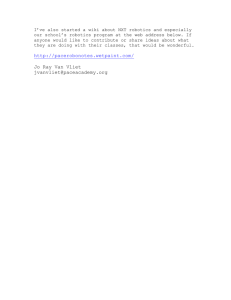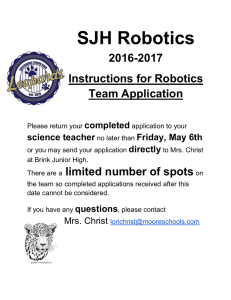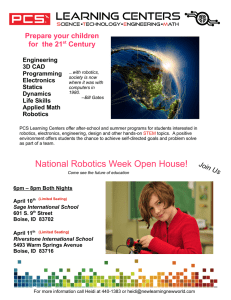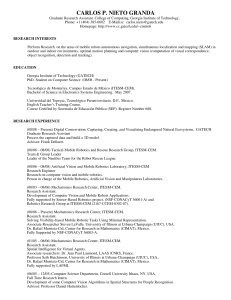How to read a research paper
advertisement
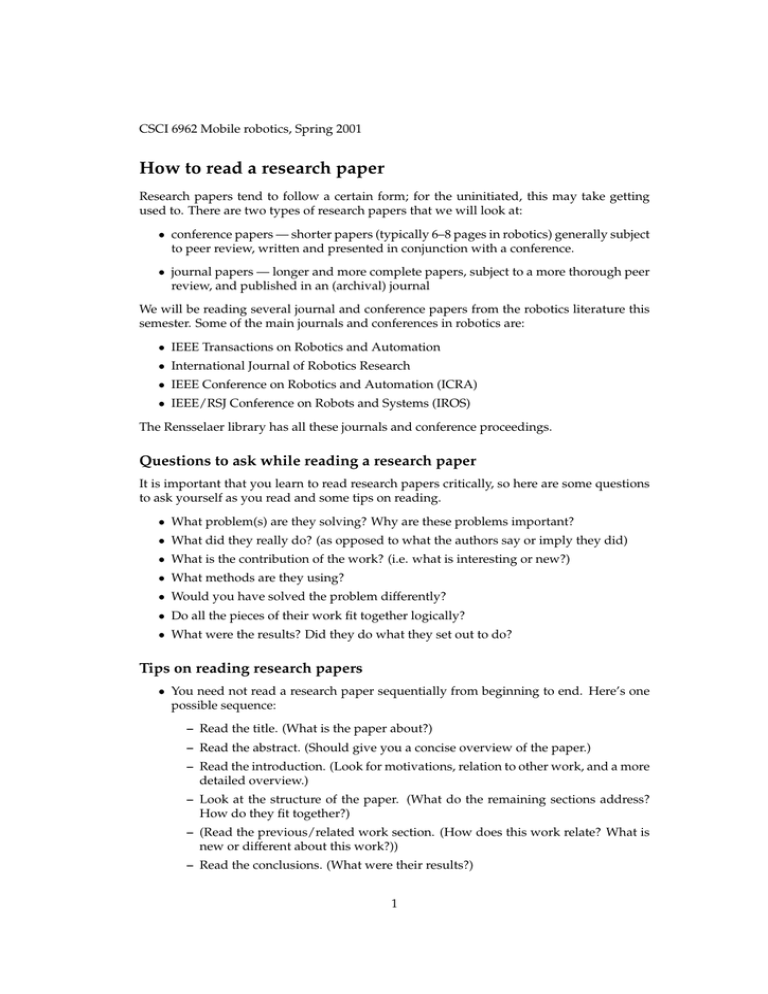
CSCI 6962 Mobile robotics, Spring 2001 How to read a research paper Research papers tend to follow a certain form; for the uninitiated, this may take getting used to. There are two types of research papers that we will look at: • conference papers — shorter papers (typically 6–8 pages in robotics) generally subject to peer review, written and presented in conjunction with a conference. • journal papers — longer and more complete papers, subject to a more thorough peer review, and published in an (archival) journal We will be reading several journal and conference papers from the robotics literature this semester. Some of the main journals and conferences in robotics are: • IEEE Transactions on Robotics and Automation • International Journal of Robotics Research • IEEE Conference on Robotics and Automation (ICRA) • IEEE/RSJ Conference on Robots and Systems (IROS) The Rensselaer library has all these journals and conference proceedings. Questions to ask while reading a research paper It is important that you learn to read research papers critically, so here are some questions to ask yourself as you read and some tips on reading. • What problem(s) are they solving? Why are these problems important? • What did they really do? (as opposed to what the authors say or imply they did) • What is the contribution of the work? (i.e. what is interesting or new?) • What methods are they using? • Would you have solved the problem differently? • Do all the pieces of their work fit together logically? • What were the results? Did they do what they set out to do? Tips on reading research papers • You need not read a research paper sequentially from beginning to end. Here’s one possible sequence: – Read the title. (What is the paper about?) – Read the abstract. (Should give you a concise overview of the paper.) – Read the introduction. (Look for motivations, relation to other work, and a more detailed overview.) – Look at the structure of the paper. (What do the remaining sections address? How do they fit together?) – (Read the previous/related work section. (How does this work relate? What is new or different about this work?)) – Read the conclusions. (What were their results?) 1 – Read the body of the paper. You may want to skip over all the equations the first time through. • The references won’t mean much to you if you’re not familiar with the area. Sometimes important parts of the work may be contained in the references, particularly in conference papers since space is limited. The references are very important when you are researching a topic — they point you to related research as well as the research upon which the current paper builds upon. • Sooner or later, you will come across something that you don’t understand. What can you do? You should try to figure out what it is and how it is being used (even though you still don’t understand it). For further reading, see the references! How to write a reading report Your reading report should be at most one page, and I’d prefer they be single spaced. It should have two main components: 1. A concise summary of the paper, providing an overview of what they actually did (and why), what methods they used, and what their results were. 2. A brief critique of the paper, giving a technical evaluation of the work, what things were unclear or not addressed, and the merits of the work. This should be a technical critique, not an emotional critique! These two components can (and sometimes should) be intertwined. Here are some guidelines for writing reading reports: • In order to write a good reading report, you must have read the paper critically. (Think about the questions in the previous section.) • Please treat this as a piece of writing — write it on a computer so that you can edit easily and also for legibility. • Use your understanding of the paper to write a cohesive summary rather than a “play by play” account of the paper. • Be concise, but include some technical detail. • The phrases “I would have liked to see. . . ” and “I thought. . . ” are not really relevant here. In the case of the former, say what you mean, e.g. “The results would be more convincing if. . . ” As for the latter, I already know that the report contains your thoughts and opinions. • When I read a reading report, I am looking to see whether you have understood the key points of the paper. • Do not simply copy choice phrases from the paper; this does not demonstrate that you have understood the paper, and it is not good writing. • Pretend that you’re writing this report for me, that I haven’t read the paper, and I’m very busy. (Some of these things aren’t pretend!) I am pretty knowledgeable about robotics, so you don’t need to go into detailed explanations, particularly not in the motivations for the work. I would guess that it takes 3 hours to thoroughly read a paper and write a good reading report. 2
